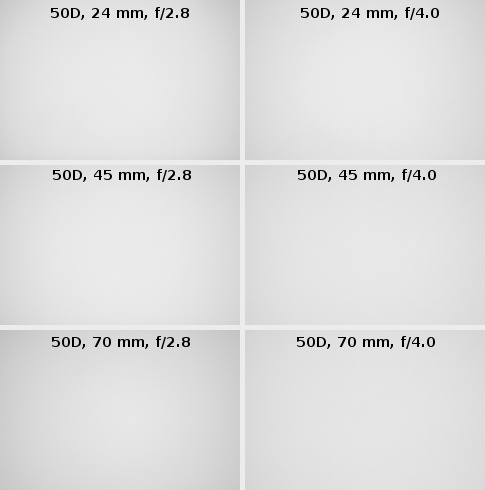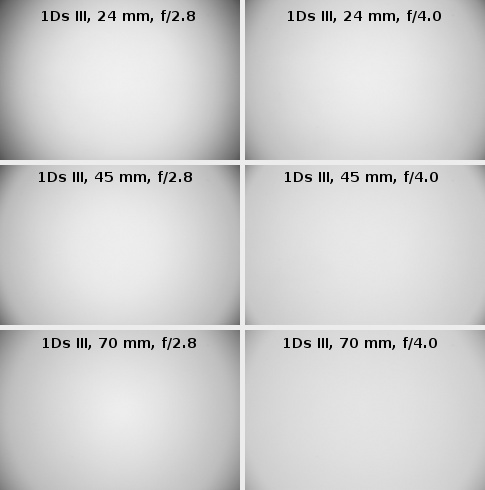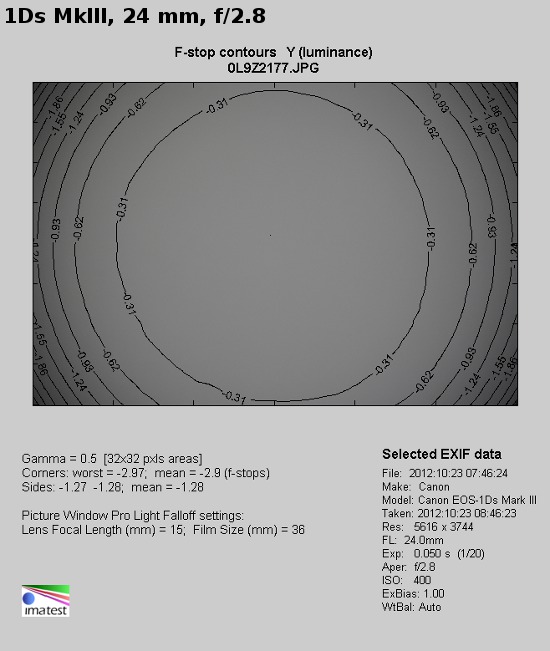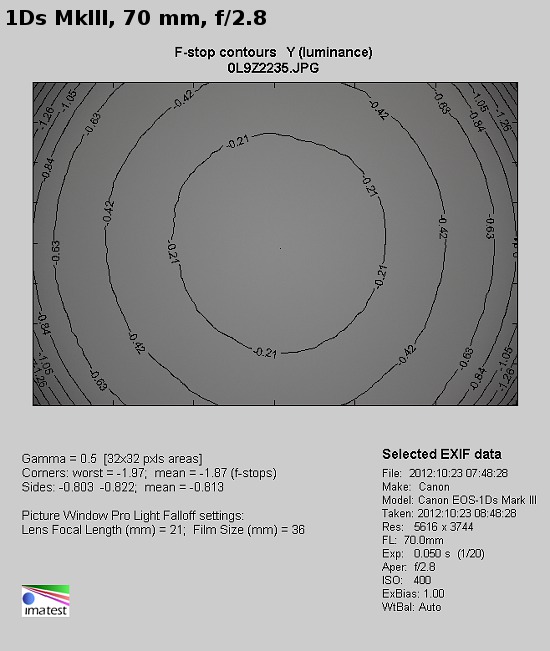Canon EF 24-70 mm f/2.8L II USM
8. Vignetting

At a very difficult combination of wide angle and f/2.8 aperture the lightness loss in the frame corners is just 14% (-0.45 EV) so practically imperceptible. By f/4.0 the vignetting decreases to the value of 11% (-0.33 EV) and then stops being dependent on the stopping down. The result reached in the middle of the focal range is even better. At the maximum relative aperture the vignetting gets to just 12% (-0.36 EV) and it decreases to 8% (-0.24 EV) by f/4.0. At the maximum focal length its level increases a bit. Employing f/2.8 you have to take into account the light fall-off in the corners amounting to 14% (-0.45 EV). It becomes completely imperceptible already by f/4.0, where it is just 7% (-0.20 EV).
Please Support UsIf you enjoy our reviews and articles, and you want us to continue our work please, support our website by donating through PayPal. The funds are going to be used for paying our editorial team, renting servers, and equipping our testing studio; only that way we will be able to continue providing you interesting content for free. |
- - - - - - - - - - - - - - - - - - - - - - - - - - - - - - - - - - - - - - - - - - - - - - - -
Those excellent results on the small sensor didn’t prepare us for the performance on full frame and it is quite a performance indeed…

In the case of 24 mm focal length at the maximum aperture you have to take into account a truly monstrous vignetting level, getting to 63% (-2.9 EV). Like in the case of the chromatic aberration it is once again the worst result in this class of equipment. The Nikkor 24-70 mm had the brightness loss of 42%, the small and compact Sigma – that of 50% and the stabilized Tamron 61%. I really lack words to comment it…but wait, in fact I know what to write. The fans of vividness will be on cloud nine!
Passing to the f/4.0 aperture you must take into account a high vignetting level, that of 46% (-1.79 EV). Even by f/5.6 it remains significant, decreasing to 32% (-1.1 EV). A moderate level can be seen only by f/8.0 and f/11 where the results were respectively 29% (-0.98 EV) and 28% (-0.97 EV).
The vignetting is lower in the middle of the focal range but lower doesn’t necessarily means really low . At the maximum relative aperture you lose as much as 54% (-2.17 EV) of light. By stopping down to f/4.0 you can make the problem decrease to the value of 34% (-1.22 EV) and on passing to f/5.6 you can reduce the vignetting level to 27% (-0.89 EV). By f/8 and f/11 that aberration is respectively 20% (-0.65 EV) and 17% (-0.55 EV)
The fewest problems you will have at the maximum focal length. By using f/2.8 aperture there the lightness fall-off in the frame corners will amount to 48% (-1.87 EV). The vignetting level becomes sensible by f/4.0 where it gets to 27% (-0.92 EV). Even lower values you get by f/5.6 and f/8.0, where the levels we measured were respectively 19% (−0.60 EV) and 14% (−0.43 EV).
 |
 |






